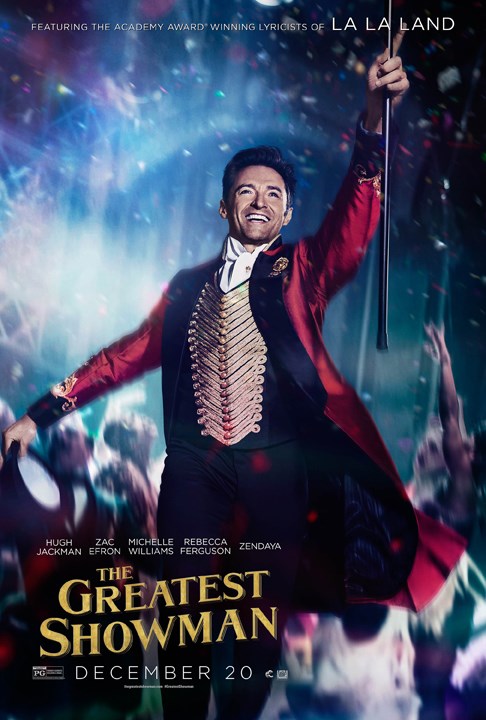P. T. Barnum is an exemplar of the “American Dream,” a man who pulled himself up from the lower-class into the heights of the public consciousness. He was also a shameless huckster who duped thousands of people with endless hoaxes and lies. He provided employment and a home for countless outcasts and “freaks” while he exploited them for his own gain. He was a man who lived for broad entertainment, but he also indulged in minstrel shows. Put bluntly, he was a complicated man, one worthy of a grand biopic or an intimate HBO miniseries.
The Greatest Showmanis not that epic film or that incisive miniseries. It does not explore the contradictions of Barnum’s life and actions. It doesn’t unveil some larger truth about American culture and the entertainment industry. Instead, it’s just a dazzling spectacle. It’s all surface, no depth.
Hugh Jackman, proving once again he’s one of the most versatile actors of his generation, stars as P. T. Barnum, a man defined by his endless ambitious and hustle. We see him as a child starving in the streets and being rejected by the upper-class, which forms the entire basis for his life’s work. Barnum wants to be respected by the people who sneered at him. That’s about as far as the film delves into the character’s psychology. Anything more salacious or nuanced was left on the cutting room floor.
The film tracks Barnum’s rise in the entertainment world (taking several dozen liberties with the historical record). He starts a “freak” museum, which gradually evolves into a massive circus. Barnum recruits midgets, bearded women, obese men, and other “oddities” for his show. But with each new success, Barnum reaches even higher, risking losing everything he has.
The plot is standard biopic fluff. Barnum’s life has been condensed in the film to give it a cinematic, narrative thrust, but it mostly falls flat. Barnum just bounces from victory to victory until a laughably contrived disaster in act three throws him off. It’s hard to get invested in a plot this shallow. There are vague themes of family, racism, love, ambition, and class struggle, but they’re so jumbled and half-baked they barely register.
But the movie isn’t concerned with story; it’s all about musical spectacle. And this is where the movie truly shines. The musical numbers are handled quite well, usually starting quiet until they build to a huge cacophony. The songs, while not super memorable, are catchy and enjoyable in the moment.
Overall, the production is slick and professional-looking. The lighting is vibrant while the camerawork is silky-smooth. For a film set in 1800s America, and considering its grimy setting of the circus, it’s disappointing there’s not much grit to Showman’s aesthetic, but it’s not a deal breaker. Only a few moments of truly hideous CGI derail the film’s look.
Acting-wise, the cast is alright. Jackman has a lot of energy and verve, but he never makes Barnum feel three-dimensional. Zac Efron has a nothing role as Barnum’s partner and next to zero chemistry with Jackman, which is disappointing. No one else really stands out, except for Zendaya as a shy acrobat facing the overt racism of her time. The actors make the dance numbers pop, but the script lets them down during the more emotional scenes.
As a crowd-pleaser, Showman gets the job done. It’s a fun way to pass an afternoon. But it’s nothing that will stick with you in a week’s time. The Greatest Showmanis an empty spectacle. In a way, P. T. Barnum would be proud.



